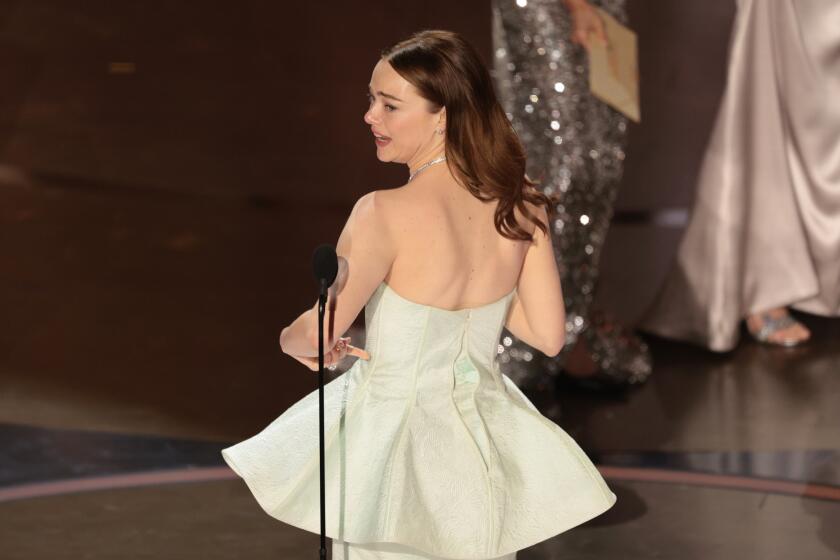Oscar Nomination Pairs No Jinx
When two actors in the same movie are nominated for Academy Awards, the common belief is that they will cancel each other out.
But it doesn’t always happen. Sometimes, one wins.
F. Murray Abraham won as best actor for “Amadeus” in 1984, although Tom Hulce was nominated for the same film.
In recent years, there have been other winners and losers for the same movie: Shirley MacLaine (Debra Winger)--best actress, “Terms of Endearment,” 1983; Jessica Lange (Teri Garr)--supporting actress, “Tootsie,” 1982; Timothy Hutton (Judd Hirsch)--supporting actor, “Ordinary People,” 1980; Meryl Streep (Jane Alexander)--supporting actress, “Kramer vs. Kramer,” 1979; Peter Finch (William Holden)--actor, “Network,” 1976.
The phenomenon will be tested again this year. Lena Olin and Anjelica Huston are both nominated for supporting actress for their roles in “Enemies, a Love Story.”
The two actresses offer an interesting contrast, one a member of an American acting dynasty, the other a product of the European theater. Huston made history in 1986, when she became a third-generation Oscar winner as supporting actress in “Prizzi’s Honor.” She had been directed by her father, John Huston, himself an Academy Award winner as writer-director of “The Treasure of the Sierra Madre” in 1948. His father, Walter, was named best supporting actor for the same film.
In “Enemies, a Love Story,” Huston plays an Auschwitz survivor who comes to New York to confront her husband, Ron Silver. She has described her character as “magnificent, extremely intelligent and honest, compassionate and yet not self-sacrificing. I loved being able to make that statement.”
“She’s after the truth all the time, she can’t compromise, and that’s what I like about her,” comments Lena Olin about her role. She is another of the three wives of Silver in the Paul Mazursky film.
Olin was born in Stockholm and became a protegee of Ingmar Bergman, for whom she acted in “After the Rehearsal” and “Fanny and Alexander.” She first drew attention from American audiences as the free-living photographer in “The Unbearable Lightness of Being.”
More to Read
Only good movies
Get the Indie Focus newsletter, Mark Olsen's weekly guide to the world of cinema.
You may occasionally receive promotional content from the Los Angeles Times.






